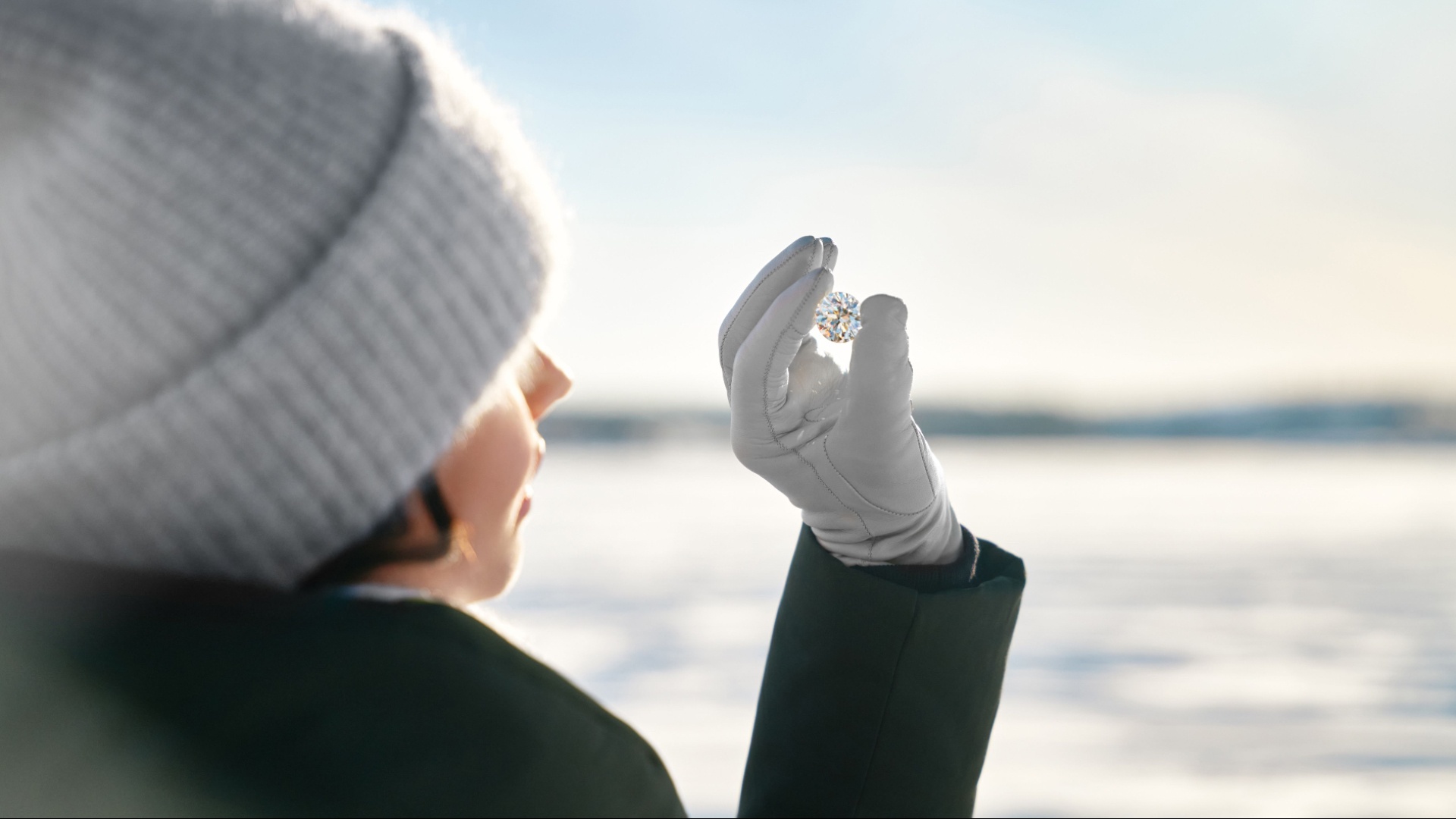In today’s age of instant gratification and fast fashion, it’s tempting to think we can recreate anything in a lab—including luxury. But the truth is that authenticity can’t be manufactured. So, while lab-grown diamonds are quick to make and relatively inexpensive to purchase, much like fast fashion, they lack the ingenuity that comes from real craftsmanship. Natural diamonds, on the other hand, are the slow-fashion equivalent of the gemstone world. Formed over billions of years deep within Earth’s mantle, every natural diamond endures unimaginable pressure and heat to become what it is today—a miracle of nature, patiently perfected to commemorate life’s most precious moments.
Today, owning a natural diamond means owning something of genuine, enduring value. It’s a piece of the planet, a symbol of lasting luxury. And amid quick fixes and transient trends, natural diamonds remind us of the things worth indulging in—the rare, the distinct, the irreplaceable.
But as the popularity of lab-grown diamonds grows, so do the misconceptions around natural ones. It’s now more important than ever to dispel the myths and shine a light on why natural diamonds are inimitable—both in value and in meaning.
Myth: Lab-grown diamonds are the more sustainable choice.
Fact: A majority of lab-grown diamonds are manufactured using non-renewable energy sources.
Although lab-grown diamonds are often marketed as eco-friendly, their production typically consumes significant energy, frequently from non-renewable sources, which can have a larger environmental footprint compared to responsibly mined natural diamonds. According to the Natural Diamond Council Diamond Facts Report, the production of human-made diamonds requires temperatures similar to 20 per cent of that of the sun’s surface, and more than 60 per cent of lab-grown diamonds are mass-produced in China and India, which generate 63 and 74 per cent of grid electricity respectively from coal.
In contrast, the natural diamond industry has made notable advancements in reducing its environmental impact and supporting biodiversity. Leading diamond mining companies prioritise environmental responsibility, investing in restoration and conservation efforts. These natural diamonds benefit from stringent sustainability measures and contribute to local ecosystems through reclamation projects. One of the most notable initiatives is The Diamond Route, a network of eight conservation sites established in South Africa and Botswana by De Beers Group that protects endangered wildlife and also creates unique learning opportunities for students, scientists and academics. Furthermore, 99.8 per cent of natural diamonds are now certified conflict-free, thanks to the UN and WTO-mandated Kimberley Process Certification Scheme, which ensures ethical sourcing by tracking diamonds from mine to market.
Myth: Lab-grown diamonds have the same market value as natural diamonds.
Fact: Natural diamonds hold and even appreciate in value over time, while lab-grown diamonds rapidly lose their worth.
When you invest in a natural diamond, you’re not just buying a pretty piece of jewellery—you’re purchasing a piece of history that retains its value. In fact, an analysis conducted by Bain & Company of diamond trends over the last 30 years reveals how the average price of natural diamonds has appreciated by 3 per cent every year. Meanwhile, lab-grown diamonds, produced on demand, do not carry the same intrinsic value. As they become more and more commonplace, their market worth has plummeted, making them a poor investment choice.
Myth: All diamonds are the same.
Fact: Each natural diamond is a one-of-a-kind creation, whereas human-made diamonds are easily replicable.
While lab-grown diamonds may look similar to natural diamonds at first glance, their journey from stone to sparkle are worlds apart. The rare conditions required to form a diamond naturally give each stone distinct characteristics, from cuts to carats, making it impossible to find two that are exactly alike. This is precisely why it stands as the ultimate expression of emotions and marker of milestones. On the other hand, lab-grown diamonds, created in controlled environments, are mass-produced in a matter of weeks. Mere replicas, these stones are uniform in design and thought; hardly comparable to the cosmic journey of a natural diamond. Moreover, there are more than 40 instruments that can easily distinguish between the two, owing to the difference in their chemical composition and spectral signature.
Myth: The rarity of natural diamonds is manufactured.
Fact: Technological advancements haven't made the search and extraction of natural diamonds any less challenging.
The belief that natural diamond rarity is artificially created is a misconception. Natural diamonds are genuinely rare due to their unique formation through geological processes and the difficulties involved in mining them. The scarcity is compounded by the fact that no new major mines have been discovered recently, leading to a 30 per cent drop in diamond recovery since 2005.
At the end of the day, it’s not just about the sparkle; it’s about owning something real, rare, and responsible. Beyond their beauty, natural diamonds carry a genuine, lasting value, a commitment to sustainability, and an ethical impact, making them true symbols of luxury and meaning—something that can’t ever be replicated by human-made alternatives.
Head to onlynaturaldiamonds.in to read more.




